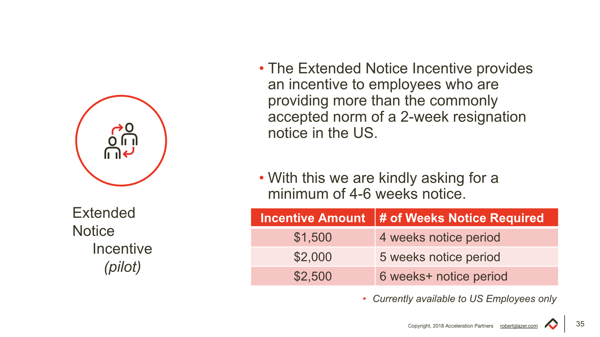The Great Resignation: How to Reduce Turnover
Are you going to break your organization’s turnover record this year? You’re not alone. If you haven’t already seen news of the ‘great quit’ of 2021 splashed across headlines, you’ve likely felt it in your own organization.
Studies show that as many as half of workers intend to look for a new job this year. As the pandemic eases, many workers are resuming the job searches they put on pause during the pandemic, and they’re joined by droves of people who are burned out, disengaged, or simply seeking other options in the new remote landscape.
There’s a massive job turnover trend already in the works, and the rest of 2021 is poised to bring unprecedented turnover in job markets across the country. Is your organization prepared to weather the turnover tsunami?We talked with several purpose-driven business leaders from around the Small Giants Community to understand why so many employees are leaving their jobs right now, how to stem the tide of turnover, and how to conduct open, transparent departures with those who do choose to leave. This article is packed with practical ideas and strategies to bring back to your organization right away — grab a notebook and pen and let’s dive in.
Why Employees Are Leaving
We first caught wind of the upcoming ‘turnover tsunami’ in March 2021, when SHRM shared an article ringing the alarm that a historic 52 percent of workers planned to look for a new job in 2021. Some of the reasons cited were the typical motivations, like the desire for a raise or a promotion. But along with the pent-up turnover demand from the pandemic — very few people wanted to switch roles during the height of the pandemic – workers were also reporting higher rates of burnout and disengagement: 25 percent of respondents wanted better work/life balance.
Robert Glazer, Founder and CEO of Acceleration Partners, is feeling the pain at his organization, but he’s looking even deeper into the reasons why turnover is spiking.
“Retention and turnover is the #1, #2, and #3 thing we’re talking about on our leadership teams right now,” says Glazer. “This phenomenon is partly due to a buildup of demand, but that is only half the story. We’ve identified three buckets in what’s causing resignations.”
1. The promise of more pay.
You’ve likely encountered this in your industry already: recruiters and headhunters are working harder than ever. “People are getting lots of money thrown at them right now in hot industries: they’re being offered more money for a similar role,” says Glazer. Combine that with the trend of younger employees switching jobs every two years or so — even if they’re happy — and you’re at risk of losing top talent to headhunters.
Fatime Mansour, Human Resources Manager at Unitech Construction Management, agrees. “We’ve seen recruiters and headhunters offering our people top pay — they’re getting called two to three times a week by recruiters.”
2. Searching for greener pastures.
This has been a hard year, and people may think that going somewhere different may erase the difficult memories of the last year. Glazer believes those in this group are conflating the difficulty of working in a pandemic with the role they were in at the time. “While this desire is understandable, it may be misguided to assume that simply changing jobs will resolve this stress or burnout,” he says.
3. Following their calling.
Finally, the pandemic has made some realize that life is too short to not be in a vocation they enjoy. Many have decided they want to do something fundamentally different than their current job and try to live out their calling instead. In this situation, try to get as much dialogue going as possible to avoid the dreaded two weeks’ notice.
“It’s part of our culture to have honest, transparent departure conversations,” says Glazer. “If a team member is starting to look for and think about a new job, we ask them to let us know so we can discuss a timetable and actually support them in their search.”
How to Reduce Turnover
While a certain amount of attrition is unavoidable, a strong company culture significantly helps stem the tide of turnover. Just ask JeVon “JT” McCormick, President & CEO of Scribe Media: Scribe has seen virtually zero turnover in the last year and the company is rapidly growing. McCormick is a culture enthusiast and Scribe invests heavily in its culture and people — they also didn’t do any layoffs, furloughs or changes in pay during the pandemic.
Culture doesn’t happen overnight, and it requires consistent maintenance and attention. The organizations who are feeling the most pain may have let culture fall to the wayside during the pandemic or prioritized profit over their people in the last 18 months. A whopping 46 percent of surveyed employees reported feeling less connected to their company or felt that company culture has diminished since the start of the pandemic. If yours is one of them, here are some tips for getting back on track.
Put culture and people first.
There’s been a lot of talk about retention lately, and McCormick wants none of it. “I refuse to use the word ‘retain’. It’s a popular word, but look at the definition,” he says. “It means to have, to keep in possession of. Nobody wants to be retained — it’s outdated, and words matter.”
Instead, McCormick focuses on creating a culture-first company that their team members love to be part of. They have a thriving company culture that is documented and publicly shared with the world to see (check out Scribe’s ‘culture bible’!) and gives everyone on the team a clear operating system. Along with offering a highly flexible environment with great pay and benefits, Scribe is a highly transparent company.
“You can read Scribe’s culture and values before you come into the company,” says McCormick. “We want people to know exactly who we are before they get here.”
Glazer agrees. Like Scribe Media, Acceleration Partners is a Forbes Small Giant and has been honored with several industry awards for its culture and performance. “If you’re trying to just pay people the most, they’ll always find somebody else who can pay them more,” he says. “Stick to your core values and build a people-first culture. That’s how you’ll find and keep people who are a good fit.”
Invest in your team.
Think about the A-players on your team. These are the superstars who keep the ball moving forward and never fail to do amazing work. They’re also the most susceptible to burnout. Be sure you’re investing effort into keeping your top performers engaged by investing in their growth, recognizing and rewarding their efforts, and conducting regular check-ins.
At Unitech Construction Management, team members are offered paid training and development opportunities to pursue new skills, certifications, and schooling. Unitech offers an array of training opportunities that benefit their employees, from Excel courses to earning a degree in the trades. Fewer and fewer young people are entering the construction industry, so it’s also a way to grow talent from the inside.
“Our core values are entrenched into our entire team. Training and development ties directly into our values: we are client-goal driven and we are innovative,” says Human Resources Manager Fatime Mansour. “We’ll send any team member to school and give them the education they want. We pay for the training as well as their time away.”
It all comes back to creating a work experience that isn’t transactional and goes beyond the paycheck. Extrinsic rewards like great pay, bonuses, and health care matter, but truly exceptional organizations (a.k.a., Small Giants!) go beyond that by creating meaningful intrinsic awards, too. Economist and writer Darren Dahl points to the Great Game of Business as an effective framework for meaningfully connecting the employees who create the numbers and the results in the business with the rewards and recognition they deserve.
Dahl points to strategies like celebrating short-term wins through MiniGames™, gain-sharing, and shared ownership as long-term recruitment and retention strategies leaders should consider.
“Most workers don’t stay in jobs for the pay alone. There’s a point of diminishing returns, where just hunting for the next raise isn’t enough to keep someone engaged and productive in their job,” says Dahl. “You need to combine those extrinsic rewards like pay and health care benefits with intrinsic motivators such as providing a sense of accomplishment or receiving praise.”
How to Conduct Open and Transparent Transitions (And Avoid Two Weeks’ Notice)
People leave. Your team members will move on for a multitude of different reasons, and Small Giants companies believe in cultivating an environment that encourages open communication about plans for the future — even if those plans involve leaving the company. Acceleration Partners actively promotes its Career Engagement Program to offer team members comprehensive career support: professional development, open and transparent transitions, career support services, and an extended notice incentive. These elements combined offer a clear, thoughtful and respectful approach to handling employee departures.
“Openly acknowledging that your company might not be the best fit for everyone long-term allows you to completely change your dialogue with your team members,” says Glazer. “When employees know they can openly and honestly discuss their career goals — and even professional unhappiness — everyone is enabled to amicably discuss the next steps toward mutually positive outcomes.”

Especially in the current wave of resignations, it pays (literally!) to encourage and reward transparency with your employees. Talk about what’s going on and clearly define the promises of your culture. Can your organization guarantee that no one will be fired with only two weeks’ notice? Can team members agree to return the favor? Back it up by paying people to give you notice.
“The difference between two weeks’ notice and four weeks’ notice is significant,” says Glazer. “We want our team members to end strong, and we can do that with some incentives and a more properly planned exit.”





Submit Your Comment